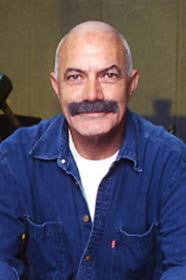The great French film critic Andre Bazin once observed: “Vittorio De Sica’s characters are lit from within by the tenderness he feels for them.”
In distinguishing between the two best known masters of Italian neo-realism, Bazin further observed: “Rossellini’s style is a way of seeing, while De Sica’s is primarily a way of feeling. He is one those directors whose entire talent derives from the love they have for their subject, from their ultimate understanding of it.”
This humanistic ideology and philosophy are very much in evidence in Miracle in Milan, De Sica’s follow-up to Bicycle Thieves, which depicts poverty-stricken lives in post-WWII Italy.
The film unfolds as a fable, with a title card informing “Once upon a time….”The protagnist is, once again, a young boy, Good Toto (Francesco Golisano), an orphan, raised by an old, good-hearted woman, who teaches him, among other things how to count.
When she dies and goes to heaven, Toto begins living with a group of beggars. Toto’s energy, skills, and hard work bring some order and fleeting happiness to the shabby lives around him.
When Toto is given a dove by a fairy, he uses its wish-granting powers to alleviate the pain aroun d him, but the dove is eventually stolen. As a result, the land on which the beggars live is taken over, and they are sent to prison.
But while in jail, miraculously, the dove returns to Toto, and his magical powers resume. His first wish, to free his friends from pirson, is thankfully granted.
Credits
Running time: 95 Minutes.
Directed by: Vittorio De Sica
Released in US: December 17, 1951
Cast
Emma Gramatica as Old Lolatta
Francesco Golisano as Good Toto
Paolo Stoppa as Bad Rappi
Brunella Bovo as Little Edvige
Anna Carena as Signora Marta Altezzosa
Guglielmo Barnabo as Mobbi the Rich Man










